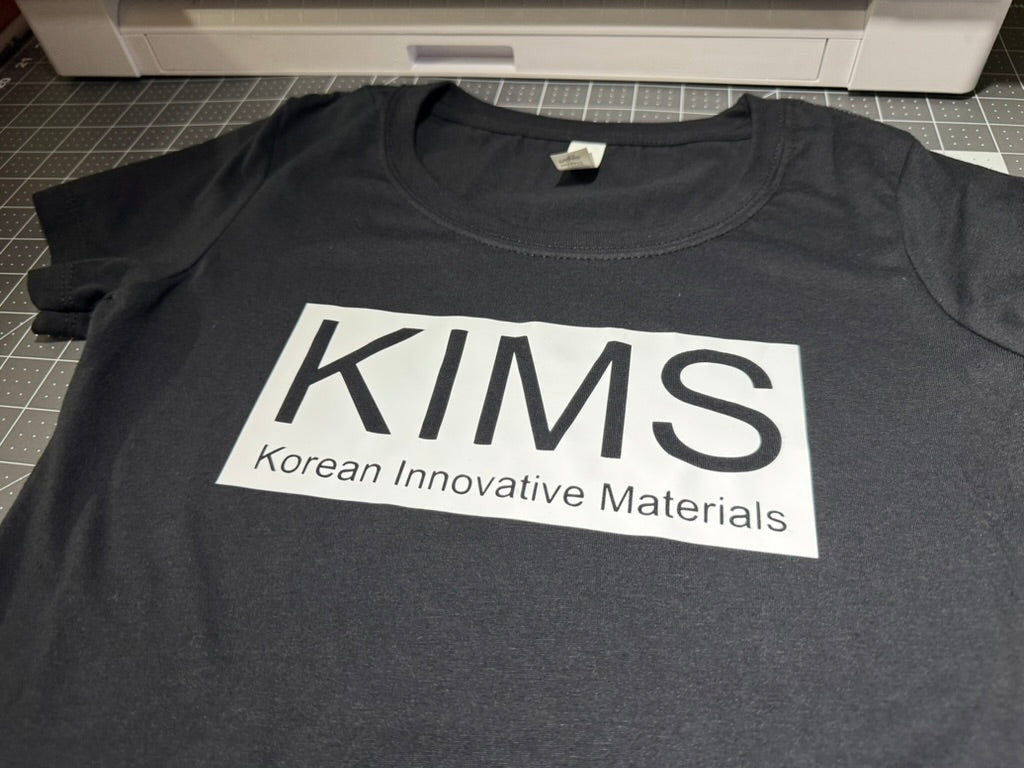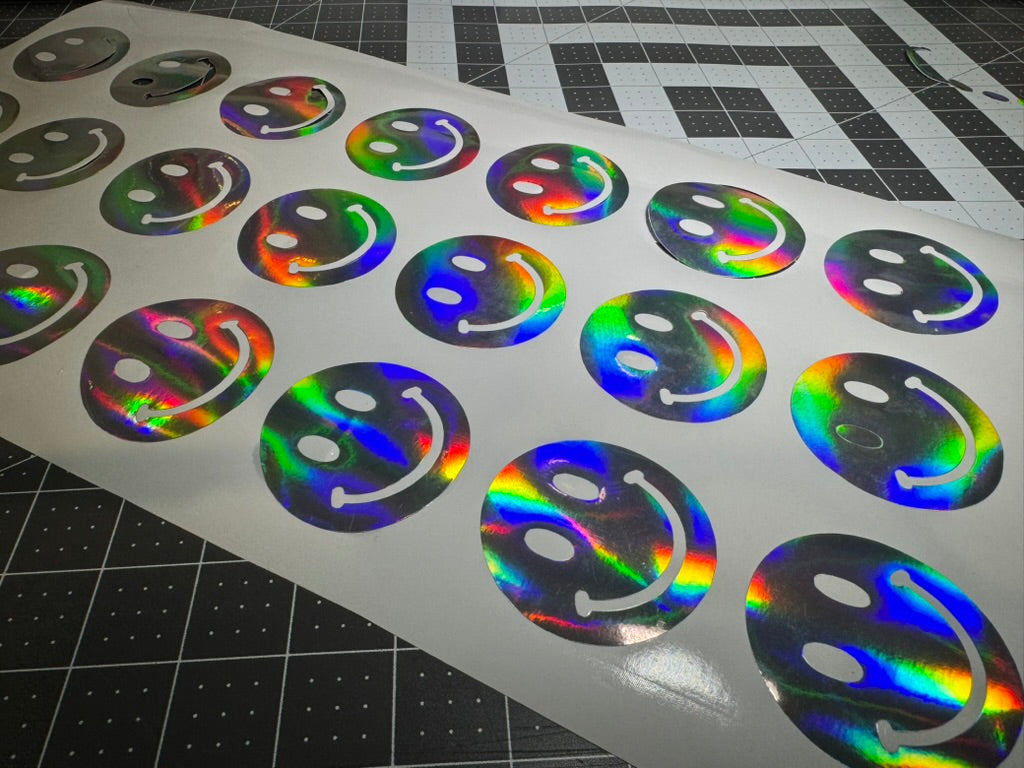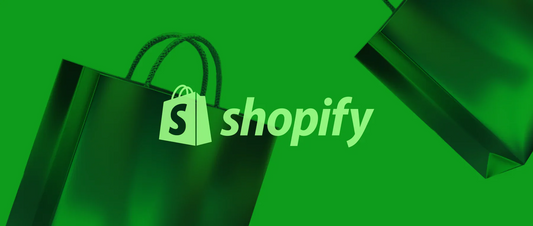Pricing custom vinyl stickers and decals begins with understanding how much it actually costs to make them. Many creators rely on guesswork or copy prices from other shops, but without knowing your own costs, it's hard to know if your business is making money.
This article explains how to break down your costs into clear categories and calculate prices that are both competitive and profitable. Whether you're running a small shop or just starting out, this guide focuses on the basic numbers behind sticker pricing.
Understanding Core Costs for Vinyl Stickers
Accurate pricing starts with knowing exactly what it costs to produce each sticker. Without this foundation, setting prices that cover expenses and allow for consistent profit becomes challenging. Beginners often underestimate their total costs, especially when not tracking time or overhead expenses.
There are four main cost categories that apply to most custom vinyl sticker businesses:
Material Costs: This includes all physical supplies used to make a sticker - vinyl sheets, transfer tape, backing paper, and lamination materials. Packaging like envelopes and protective sleeves also count if they're part of each order.
Labor Costs: This covers the time spent designing, cutting, weeding, applying transfer tape, packing, and shipping. Even if you're doing the work yourself, your time has value and should be calculated as part of the cost.
Overhead Expenses: These are indirect costs that support production - cutting machines, design software, computers, workspace rent, electricity, and maintenance. These expenses are typically divided across all products made in a given period.
Profit Margin: This is the amount earned after all costs are covered, usually expressed as a percentage of the total sale price.
For example, if materials cost $0.75, labor is $1.25, and overhead is $0.50, your total cost per sticker is $2.50. Adding a 50% profit margin would give you a $5.00 sale price.
Step-by-Step Formula for Calculating Sticker Prices
Let's break down exactly how to calculate what to charge for your custom vinyl stickers and decals for profit.
Step 1: Calculate Material Cost
To find your material cost per sticker, use this formula:
(Vinyl cost per square foot ÷ Number of stickers per square foot) + Cost of transfer tape + Other materials
For example:
-
If vinyl costs $2 per square foot
-
And you can fit 16 3-inch stickers on that square foot
-
Your vinyl cost per sticker is $0.125
-
Then add costs for transfer tape, backing, and packaging
Don't forget to include:
-
Waste percentage (typically 10-15% of materials)
-
Packaging materials like envelopes or backing cards
-
Any special finishes or laminates
Step 2: Determine Labor and Time
Track the time it takes to complete each step of the sticker-making process:
-
Designing
-
Machine setup
-
Cutting
-
Weeding
-
Application/finishing
-
Packaging
Calculate your labor cost using this formula:
(Minutes spent per sticker × Your hourly rate) ÷ 60
For example, if you value your time at $20 per hour and spend 3 minutes on a sticker, your labor cost is $1.00 per sticker.
|
Experience Level |
Suggested Hourly Rate |
|---|---|
|
Beginner |
$15-$20 |
|
Intermediate |
$20-$35 |
|
Expert |
$35-$50+ |
Step 3: Add Overhead Expenses
Overhead includes all business expenses that aren't directly tied to making a single sticker. Calculate your monthly overhead and divide by your expected monthly production:
Monthly overhead ÷ Expected monthly units sold = Overhead per unit
Common overhead expenses include:
-
Equipment costs (spread over useful life)
-
Software subscriptions
-
Utilities
-
Workspace rent
-
Website fees
-
Marketing costs
-
Transaction fees
For example, if your monthly overhead is $500 and you make 1,000 stickers per month, each sticker carries $0.50 of overhead cost.
Step 4: Incorporate Profit Margin
Now that you know your total cost (materials + labor + overhead), you can add your profit margin. There are two common methods:
Profit Margin: (Selling price - Total costs) ÷ Selling price × 100%
Markup: (Selling price - Total costs) ÷ Total costs × 100%
For custom vinyl stickers and decals, profit margins typically range:
-
Starting businesses: 20-30%
-
Established businesses: 30-50%
-
Premium or specialized designs: 50%+
Using our earlier example with a total cost of $2.50 per sticker and a 50% profit margin, the formula would be:
-
Let's call the selling price X
-
0.50 = (X - $2.50) ÷ X
-
0.50X = X - $2.50
-
0.50X = X - $2.50
-
-0.50X = -$2.50
-
X = $5.00
Your final price would be $5.00 per sticker.
Choosing a Profitable Markup and Profit Margin
The profit margin you choose depends on several factors that affect the perceived value of your vinyl stickers:
Market Position: Where do your stickers fit in the market? Budget, mid-range, or premium?
Uniqueness: Common designs generally command lower prices than exclusive artwork.
Complexity: Intricate designs that require more weeding time justify higher prices.
Target Customer: Some customers are more price-sensitive than others.
A simple one-color vinyl decal might sell for $2.50 in a budget-friendly shop, while the same design on premium holographic vinyl could command $6.00 or more in a specialty store.
When deciding on your profit margin, consider:
-
Competitive analysis: What are similar stickers selling for?
-
Value proposition: What makes your stickers worth the price?
-
Volume potential: Will a lower price lead to significantly more sales?
Optimizing Prices to Stay Competitive
Pricing isn't a one-time decision. The vinyl sticker market changes, and your pricing strategy should evolve too.
Research Competitors
Look at similar vinyl stickers and decals on platforms like Etsy, Amazon, and local markets. Create a simple spreadsheet to track:
-
Sticker sizes
-
Design complexity
-
Material types
-
Price points
-
Special features
-
Shipping policies
This research helps you identify where your products fit in the market and whether your prices are competitive.
Test Price Points
Try different prices to see what works best:
-
List identical stickers at different price points
-
Gradually increase prices until sales slow down
-
Track conversion rates at each price level
Use this formula to determine if a price change improves your revenue:
(New price × New sales volume) > (Old price × Old sales volume)
Use Discounts Strategically
Discounts can boost sales without permanently lowering your prices:
-
Volume discounts for bulk orders
-
Limited-time promotions
-
Bundle pricing for sticker packs
-
Loyalty discounts for repeat customers
Always ensure that even with discounts, you're still making a profit on each sale.
Scaling for Bulk Orders and Complex Designs
As your sticker business grows, you'll likely encounter bulk orders and requests for more complex designs. Both require adjustments to your pricing formula.
Tiered Pricing for Bulk Orders
Bulk orders reduce your per-unit costs through economies of scale. A tiered pricing structure might look like:
-
1-10 units: $3.00 each (full price)
-
11-50 units: $2.70 each (10% discount)
-
51-100 units: $2.55 each (15% discount)
-
101+ units: $2.40 each (20% discount)
These discounts reflect your reduced time and material costs per unit when producing in larger quantities.
Pricing Complex Designs
Multi-color designs or intricate patterns require additional materials and significantly more weeding time. For these designs:
-
Add material costs for each additional color
-
Increase labor time for complex weeding
-
Consider a complexity surcharge for very detailed work
For example, a three-color design might cost 50% more to produce than a single-color design of the same size.
Using Premium Materials for Better Profits
Different vinyl materials offer varying durability, appearance, and perceived value. Premium materials cost more but also allow you to charge higher prices.
|
Material Type |
Durability |
Perceived Value |
Suggested Price Increase |
|---|---|---|---|
|
Standard Indoor Vinyl |
1-3 years |
Basic |
Base price |
|
Outdoor Vinyl |
5+ years |
Higher |
+15-25% |
|
Holographic/Specialty |
3-5 years |
Premium |
+30-50% |
|
Waterproof/Weatherproof |
5-7 years |
Professional |
+25-40% |
When using premium materials, clearly communicate their benefits in your product descriptions:
-
Durability ("lasts up to 5 years outdoors")
-
Special effects ("color-shifting in different lighting")
-
Application versatility ("works on water bottles, cars, and laptops")
This information helps customers understand the value they're getting for the higher price.
Avoiding Common Pricing Mistakes
Many sticker businesses struggle with profitability due to these common pricing errors:
Underestimating Time: Don't forget to account for customer communication, design revisions, file preparation, and learning curves for new designs.
Ignoring Overhead: Equipment depreciation, software subscriptions, and workspace costs add up quickly and should be factored into your prices.
Pricing Based Only on Competition: While competitive research is important, your prices need to reflect your specific costs and profit goals.
Not Differentiating Quality: If you're using premium materials or offering exceptional design work, make sure customers understand what makes your stickers worth more.
Moving Forward With Confidence
Pricing custom vinyl stickers and decals for profit comes down to understanding your costs, adding an appropriate margin, and communicating value to customers. With the formula and considerations outlined in this guide, you can set prices that are both competitive and profitable.
Remember that pricing is both a science (calculating costs) and an art (understanding value). The right price not only covers your expenses and provides profit but also reflects the quality and uniqueness of your work.
Ready to create stunning custom vinyl stickers with premium materials? Shop Our Vinyl Rolls and Heat Transfer Products at KIMS Direct for professional-grade materials that help you maximize both quality and profit margins.
FAQs About Vinyl Sticker Pricing
What is a good profit margin for custom vinyl stickers?
A healthy profit margin typically ranges from 30-50% for established businesses, while beginners might start at 20-30% and premium designs can command 50-70%.
How do I price vinyl stickers for an Etsy shop?
Calculate your total costs (materials, labor, overhead), add your desired profit margin (30-50% is common), and don't forget to account for Etsy's fees in your overhead calculations.
Should I charge more for intricate designs that take longer to weed?
Yes, intricate designs require more time and skill to weed properly, so adding 25-50% to your base price depending on complexity is reasonable.
How do I determine the right price point for my target market?
Research similar sellers in your target market, evaluate your unique value proposition, test different price points with small batches, and adjust based on customer feedback.
When should I offer discounts without hurting my profit margins?
Offer discounts strategically for bulk orders, during slow seasons, or for customer acquisition, ensuring your discounted price still covers costs plus a minimum profit margin.







